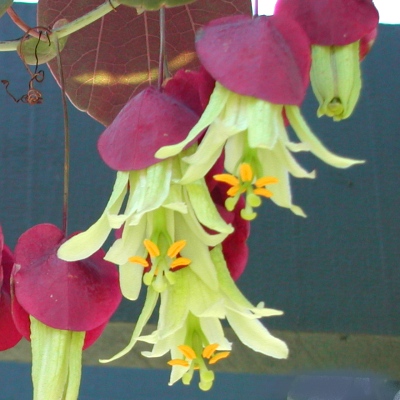Passiflora membranacea Please be careful removing your plant from it's packaging. Getting started -- Your plant was grown in filtered light, so plan on acclimating it to direct sun slowly. Start it with either filtered sun or early morning sun and slowly increase the sun a little each week, watching for wilting. You can transfer your plant to a 1 quart to 1 gallon container. Soil -- Like most Passiflora, this one likes fertile, well-draining soil. A typical soil mix is 2 parts potting soil to 1 part perlite or coarse sand. Watering -- Aim to keep the soil evenly moist (but not constantly soggy). Temperature & humidity -- This Passiflora seems to do best between 45 and 80 degrees. It reportedly can survive a few degrees of frost, but i recommend protecting it from all frost. I'm not sure how much heat it can tolerate, but if it is like some other highland Passifloras, it might not flower if temperatures rise above the upper 80s. Light -- It prefers full or mostly sunny conditions, however some afternoon shade may be necessary in warmer areas. If you grow it in a pot, keep the pot shaded to avoid overheating of the roots. Trellising -- The vine can be given something to climb on, like a large trellis, arbor, or the side of a home You can grow it along an arbor or pergola. You can also grow it along the roof of a greenhouse, with wires strung across the roof to give the vine something to attach to. The vine can potentially grow 40 feet or more if unpruned and can smother trees, so choose a site carefully. You may cut back any unwanted growth. Fertilizing -- After the first month, feed about every 2-3 months with an all-purpose fertilizer, following the dosage on the package. Flowering and fruiting -- The plant blooms from Summer through Fall. If you want fruit, you will need a 2nd plant, although it might be able to cross-pollinate with certain Decaloba-type Passiflora species. Pests to watch for -- spider mites (tiny "dots" under the leaves), aphids. Enjoy your plant! Jeff Strange Wonderful Things
|
|||||||||


